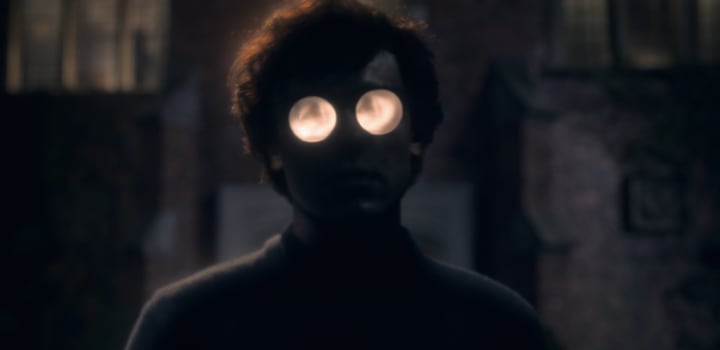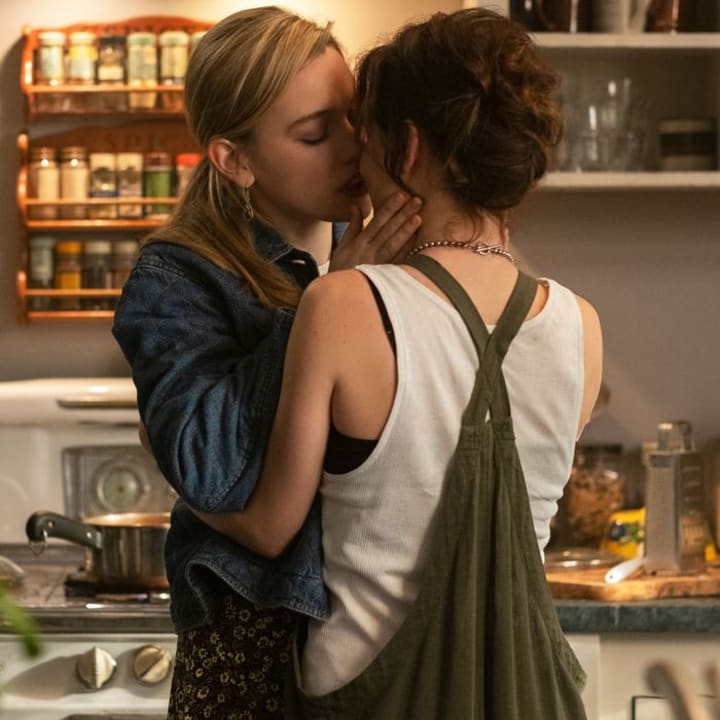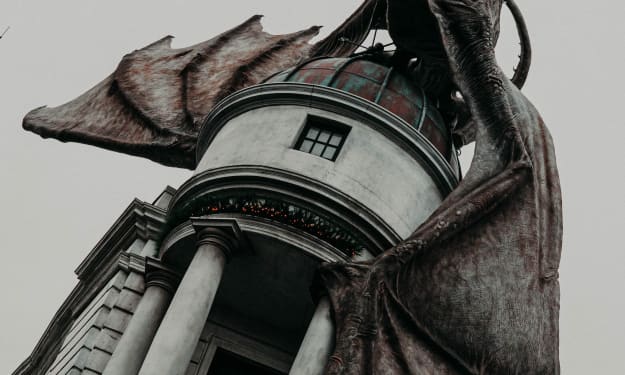“The Haunting of Bly Manor”: Too Many Ghosts, Too Little Horror
It’s no “Hill House” but it will do for a spooky night or two.

Beware, dear reader, as you forge ahead into this article! Beware… mostly of spoilers and not much else. The scares in this creepy tale are not that impressive for a hardened horror fan like me but it is still a pleasant watch.
As a big fan of “The Haunting of Hill House”, I was quite excited to delve into this new instalment in what might be shaping up to be a Netflix horror anthology. The overall experience was fun. “The Haunting of Bly Manor” has its merits and I mostly enjoyed watching it. I did, however, find it vastly inferior to its predecessor. “The Haunting of Hill House” had an expertly crafted mystery which was revealed gradually until all the pieces fit perfectly. “The Haunting of Bly Manor” feels like several completely separate stories held together with Sellotape. If I had to describe it in one word, it would be “untidy”. Also, the plot has more holes than a sieve.
The source material and what they did with it
The main inspiration for the series comes from an 1898 horror novella by Henry James called “The Turn of the Screw”. Trying to stay somewhat true to it perhaps explains - although it does not excuse - some of the slightly odd choices made in this adaptation.
The first thing we see is a completely unnecessary and rather banal framing device. The novella had a framing device, so why not use one in the series? (“Because it is clunky and rarely works,” would be the answer to that.) A young couple is getting married. At their rehearsal dinner the conversation somehow turns (or, as we deduce later, is intentionally steered) towards ghost stories. One of the guests offers to tell a story, insisting that it’s not something that happened to her (which makes it immediately obvious that it is, in fact, something that happened to her). And yes, the framing device does connect to the main story at the end but no, that doesn't really justify its existence.

Anyway, after that waste of time we do eventually dive into the actual story. A young American woman named Dani attends an interview for an au pair job. Her prospective employer is the rich uncle of two young siblings who lost their parents a couple of years prior. After some salty remarks on both sides and a chance meeting at a bar post-interview, the uncle decides to hire her and so Dani is shipped off to Bly Manor.
Another thing which, perhaps, the novella can be blamed for is the bizarre way the narrator and some (but not all) of the characters talk. The main plot of the series takes place in 1987 and yet it sometimes feels like we are, in fact, supposed to be in the late nineteenth century. Some things are updated and others, for some strange reason, aren’t. While I understand that little Miles and Flora are rich English kids and therefore a bit posh, their almost Victorian language and mannerisms are still a little too much. Initially, I thought the strange behaviours and speech were meant to be part of the mystery but they are never truly explained. We do later find out that Miles and Flora are occasionally possessed by ghosts but these ghosts are their contemporaries so there is no call for an old-fashioned way of speaking. There is one phrase which Flora has adopted from her previous au pair Miss Jessel (whose recent suicide is central to the plot). I can understand why she repeats that particular phrase all the time, even if it sounds somewhat odd. But almost everything else Flora says also sounds unnatural and we know that's not Miss Jessel's influence because when we finally meet Miss Jessel in a flashback episode, she talks like a perfectly normal 80s woman. So what gives?

The narration is also way too literary and fairytale-ish and its insistence on almost never calling any character by their name quickly becomes a bit cumbersome. Dani is always referred to as “the au pair” which puts a strange distance between us and the person we’re supposed to sympathise with. I think I would have accepted this sort of thing a lot more easily in a theatre setting. Theatre is less literal by nature. But, in a TV show, trying to blend real environments and everyday dialogues with an intrusive narrator who sounds like they are telling a century-old ghost tale on some stage somewhere just doesn’t quite work.
You can have too much of a good thing
I won’t go into too much detail about the story because the whole thing is overly convoluted and nearly impossible to summarise. Suffice to say that, while I certainly expect ghosts in a ghost story, this one has far too many, some of them utterly unimportant to the plot, and all seemingly governed by different rules. One of the constant jump scares is not even an actual ghost but a manifestation of Dani’s guilt related to her completely unnecessary backstory.
Did I say there were too many ghosts? It feels like there are twice as many backstories! Even backstories have a backstory in this series and at least half of them are utterly pointless!

Was this all in the source material? No. Not even a little bit. A quick look at “The Turn of the Screw” reveals that it’s a simple creepy tale about a young nanny and two ghosts - Miss Jessel and her lover Peter Quint - who are trying to possess the kids she’s taking care of. That’s pretty much it. So, essentially, what happened here is, in their attempts to flesh out the script the writers kind of made it… well, a little obese. At 9 episodes, Bly Manor is, if you ask me, 6 episodes too long. And, after the first few, I was not even sure I was watching horror anymore. It felt more like “The Twilight Zone” which I wouldn’t personally classify as the same genre. That wouldn’t be a problem by itself but, when taken with everything else, the tone-changes added to the overall messiness.

Throughout the story we get hints of this terrifying presence in the house, which the children seem aware of but nobody else is. This would be really cool and scary if we didn’t get constantly distracted but the other main plot involving Miss Jessel and Peter Quint. Frustratingly, we find out towards the end that these two plots are only very tangentially related and what initially looks like the climax - the two dead lovers trying to take over the children - is completely hijacked by a different climax involving a faceless ghost we’ve barely even seen. The second to last episode of the series is entirely devoted to an info-dump about her origins, shoving in new characters that have no bearing on the plot, nor do we have any chance of caring about them this late in the game. On top of that, the narration of that episode, in its quest to sound clever or poetic, or who knows what, repeats itself so many times in such an annoying manner that I literally shouted at the screen “We get it already!” and was tempted to just skip ahead. Most of the information in that episode is completely useless and the rest serves to give a very flimsy explanation for the extremely nonsensical rules which govern this central monster. (And, by the way, if you think about it, it’s impossible for the narrator to know all of the facts that she’s relating.)
The characters and relationships
One of the series’ good points is that most of the characters are interesting and likable. I was unfortunately not a big fan of Dani (maybe something about the actress didn’t grab me) but that’s more of a personal preference than anything else. The children, as I already mentioned, are often too odd for me to form any genuine connection to but they’re not terrible and you still don’t want bad things to happen to them. The friendship and sense of community which forms between the four adults who spend most of their time in the house - the housekeeper Mrs Grose, the cook Owen, the lady gardener Jamie and Dani herself - is genuinely heart-warming and probably the biggest thing to keep you invested.

We are also presented with some very nuanced characters and the story ends up not painting anyone as 100% the villain. I mostly like that approach. The only issue is that once you explain everyone’s backstory and motivation and you eliminate the possibility of absolute evil, very little is scary anymore. I’m perfectly okay with an optimistic ending to a horror film or series but here, even before the climax, nothing is left to the imagination anymore. In fact, one of my biggest problems with “Bly Manor” is that the viewer knows everything way before the characters find out. Way, WAY before the characters find out. Which leaves us to drum our fingers impatiently while the people on screen ever so slowly figure things out. And another thing - usually films and TV shows speed up as they race towards their climax. This one slows down significantly and kind of leisurely strolls over the finishing line. I’d be lying if I said I was on the edge of my seat.
Even after everything gets somewhat resolved, albeit in a rather weird way, the series keeps going for another full episode in which it once again changes its tone and makes you feel like you are in a totally different story. Honestly, if watched from beginning to end, “Bly Manor” almost feels like someone wrote it over a long period of time without going back to reread or edit previous chapters, which led to style changes along the way. We suddenly find ourselves watching a tearjerker/romcom about the entire shared life of a lesbian couple, one member of which just happens to be possessed by a malicious ghost.

Okay, let me address the tragic lesbian love story between Dani and the gardener for a moment. It’s good. It’s not perfect but it’s pretty well done. It feels natural and not like it was just put in there for the sake of diversity. In and of itself there’s nothing wrong with it. The trouble is that this incredibly prolonged epilogue comes entirely out of nowhere and feels to me very much out of place. All it does is bring on even more questions that the series can’t answer satisfactorily.
Regardless, I will give the show a point for handling its diverse cast of characters (not only LGBTQ but non-white as well) rather well. And it manages to kind of pull off not one but three tragic romances (Dani and Jamie, Mrs Grose and Owen, and Miss Jessel and Peter Quint) without completely falling on its face. That has to count for something.
In the end...
I won’t completely spell out the story’s final twist but, if you ask me, you wouldn’t lose much if I did. It’s not that big of a twist and you will probably pick up on it pretty early (if you haven’t watched the series already). In the end, much like “Hill House”, “Bly Manor” leaves us on a hopeful note, which is nice. As to whether it does enough to overcome its flaws - I’ll let you decide that for yourself.
About the Creator
Yana Aleks
Fiction writer, reviewer and an incurable chatterbox.






Comments
There are no comments for this story
Be the first to respond and start the conversation.